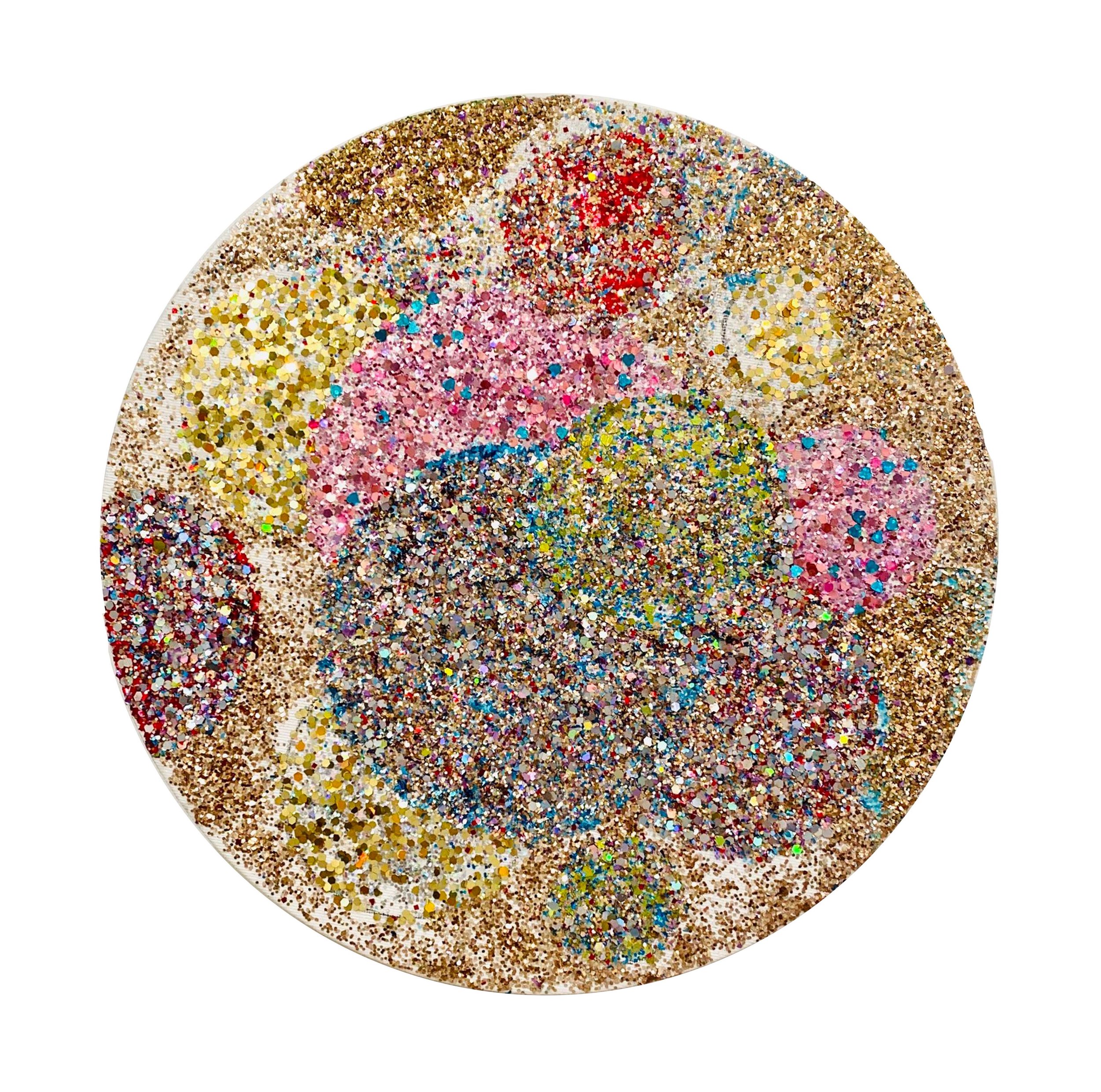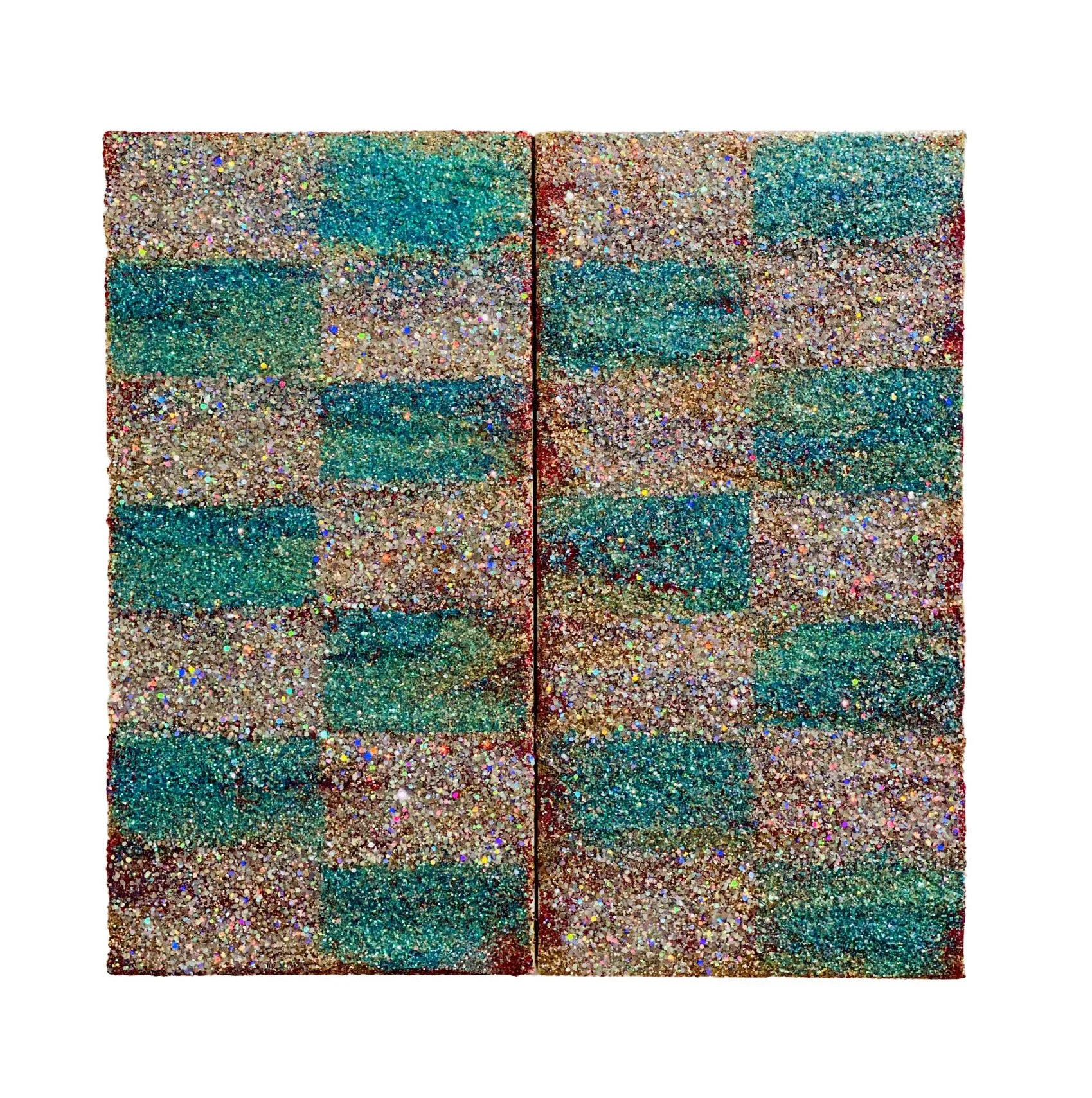“Peter Dayton On Creating Happiness”
LUX’s Chief Contributing Editor, Maryam Eisler, visits Peter Dayton to photograph and interview the East Hampton-based artist at his studio. Here, Dayton speaks about the intention and ideas behind his artworks as well his relationship with Peter Marino and Chanel…

One Hundred and Forty Four Squares / 2022 / 60" x 60"

Everything Always / 2022 / 48" x 48" diptych

Group of 6 / Assorted Sizes

So Many Planets / 2022 / 12”

Deep Freeze / 2022 / 72" x 60"

Deep Freeze (Detail)

Current / 2022 / 48” x 48”

Burnt Orange / 2022 / 24" x 18"

Six by Nine / 2022 / 72" x 60"

Two Times Seven / 2022 / Diptych 24” x 24”

Pink Fence / 2022 / 20" x 20"

Ions and Ions / 2022 / 48" x 36"

Pink Squares / 2022 / 5” x 7”

Floating By / 2022 / 20" x 16"

Hard to Find / 2022 / 24" x 24"

Looking Out / 2022 / 24" x 24"

Obscure Patterns / 2022 / 20" x 20"

No Way Out or In / 2021 / 24” x 18”
Glitter
Christina M. Strassfield Interviewing Peter Dayton
Glitter Series 2022
CMS “ I think it's something unique. It's totally different. And it's something, again, that you've transformed the use of the material and you've transformed the whole way you're approaching it. And again, it's painting with a new media. And that is something that is very rare, that is something that artists should strive for, at any level that they're doing.”
It’s deep. Peter Marino saw immediately that I had a gift for this ‘beauty thing’ and he just took me under his wing. That’s how and why my association with Chanel has been so great.
It’s deep. Peter Marino saw immediately that I had a gift for this ‘beauty thing’ and he just took me under his wing. That’s how and why my association with Chanel has been so great.
“I think the glitter is here to stay, for the world to enjoy. Even though the refraction of light is so busy, there’s a certain calmness to it all. That’s probably what you feel. So I invite you to sit back, relax and lose yourself in it all day!”
Glitter New York Times
December 31, 2019
Glitter is aluminum metalized polyethylene terephthalate.
There are a couple ways to achieve a rainbow effect on individual glitter particles. Holographic glitter is made by embossing a fine pattern onto film, so that the surface reflects different colors of light in different directions — there is nothing intrinsically rainbow-colored about the glitter itself. Contrast this with more subtle iridescent glitter, which reveals various luminous colors depending on the angle at which it is viewed, and is made from a multilayered clear film, composed of polymers with different refractive indexes.
Humans, even humans who don’t like glitter, like glitter. We are drawn to shiny things in the same wild way our ancestors were overcome by a compulsion to forage for honey. A theory that has found favor among research psychologists (supported, in part, by a study that monitored babies’ enthusiasm for licking plates with glossy finishes) is that our attraction to sparkle is derived from an innate need to seek out fresh water.
Glitter is made from a multilayered clear film, composed of polymers with different refractive indexes and when seen from different angles the colors change to revel a full color spectrum in some cases.
For people who love glitter, there is wonderful news: all the modern plastic glitter that has ever been created is still right here with us. According to Dr. Victoria Miller, a materials science and engineering professor at North Carolina State University, the plastic film from which most glitter is made takes about 1,000 years to completely biodegrade on Earth.

